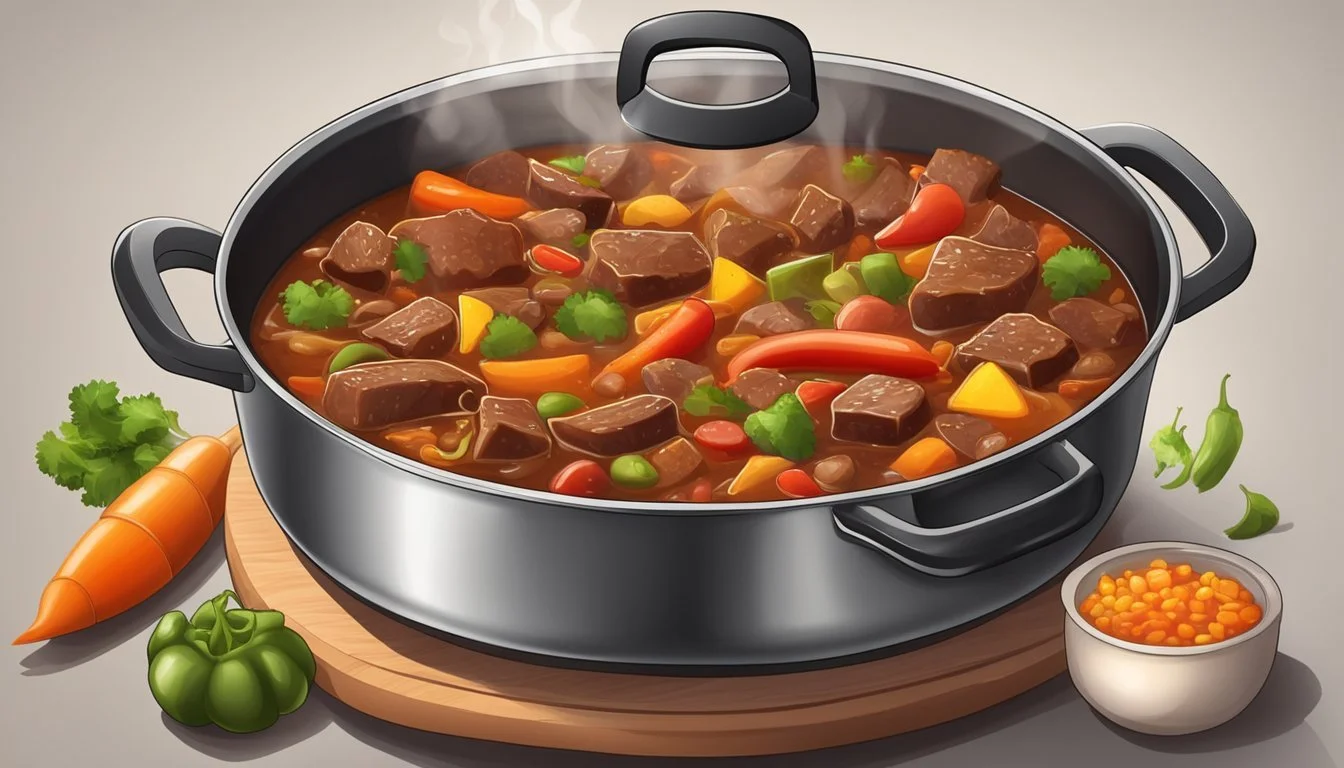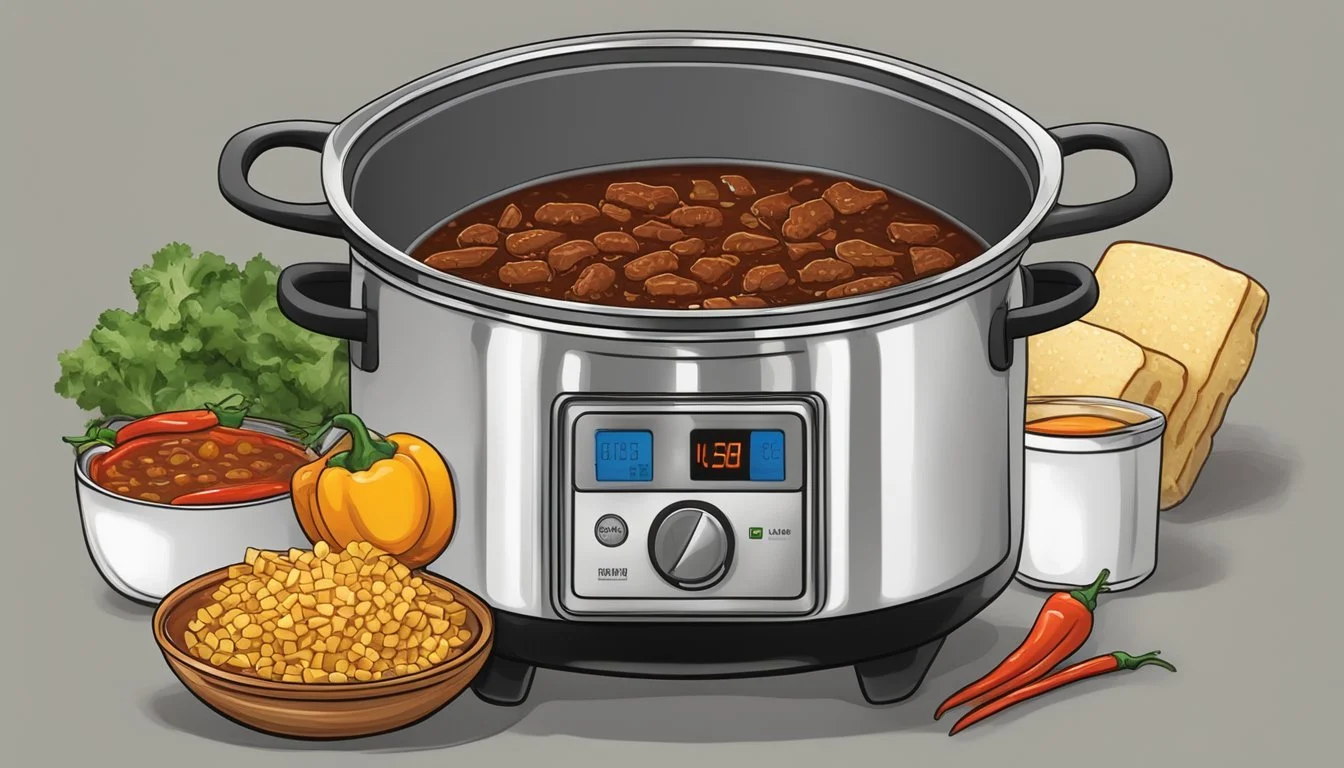Best Way to Reheat Beef Chili
Ensuring Richness and Robust Taste
Reheating beef chili while maintaining its thickness and robust flavor can be a culinary challenge. The key lies in understanding how heat interacts with the ingredients, which include the tender beef, rich tomato base, and the variety of spices and beans that give chili its hearty character. Preserving the texture and flavor during reheating requires a gentle and controlled approach to ensure that every spoonful is as enjoyable as when it was first cooked.
Suitable reheating techniques can vary depending on the quantity of chili and the tools at one's disposal. Utilizing an oven can be effective for larger batches, as it provides a steady, all-encompassing heat that warms the chili slowly, preventing the beef from drying out and keeping the spices well-integrated. Gently simmering chili on the stovetop is another option that gives one the advantage of stirring, which helps maintain an even temperature throughout and prevents the bottom from scorching. Whether opting for the oven method or the stovetop, adding a touch of liquid, such as water, stock, or even a splash of beer can assist in preserving moisture and enhancing flavor.
Understanding the Basics of Chili
Chili is a savory stew known for its rich flavors and hearty ingredients. Mastering the basics of its composition and the principles of reheating is essential to maintain its taste and texture.
The Components of a Flavorful Chili
A flavorful chili typically combines meat (often ground or diced), beans, tomato paste, and a medley of spices, including chili powder, cumin, and paprika. Texture is crucial—chili should be thick and packed with these components, each contributing to a balanced and robust flavor profile.
Meat: Adds richness and depth
Beans: Provide body and a creamy texture
Tomato Paste: Offers a concentrated burst of umami and acidity
Spices: Bring warmth, smokiness, and complexity
The Science of Reheating Chili
When reheating chili, the goal is to restore it to a palatable temperature without sacrificing the moisture and texture that characterize a good chili. The temperature should be even throughout, avoiding overheating that could break down the ingredients and cause separation. A gentle reheating method helps maintain the integrity of the flavors and the desirable medium thickness.
Slow and Low: Ensures even heating without overcooking
Consistent Stirring: Preserves texture while evenly distributing heat
Addition of Liquids: Aids in maintaining moisture levels if chili thickens too much during reheating
Food Safety Considerations
When handling leftovers, food safety is paramount. Chili should be stored properly and reheated to an internal temperature of at least 165°F (74°C) to eliminate the risk of foodborne illness. Below are key considerations for reheating and storing chili:
Storage: Cool down rapidly and refrigerate within two hours of cooking
Reheating: Achieve a uniform internal temperature of 165°F (74°C)
Moisture: Retain by covering during reheating to prevent drying out
Remembering these simple yet important guidelines will ensure that one's chili remains a thick, flavorful, and safe meal to enjoy even after reheating.
Preparing for Reheating
Refining the process of reheating beef chili is essential to maintaining its richness and complex flavors. Proper preparation steps ensure that the chili reheats to a thick, flavorful, and tender consistency while preserving the quality and safety of the dish.
Thawing and Defrosting Chili
Frozen chili should be moved from the freezer to the refrigerator 24 to 48 hours before reheating to allow it to thaw slowly, which helps maintain its texture. For a quicker method, one can submerge the airtight container in cold water, changing the water every 30 minutes until the chili is defrosted.
Storage Tips for Preserving Quality
To avoid freezer burn, which can affect the texture and flavor of chili:
Chili should always be stored in airtight containers or heavy-duty freezer bags.
Limit air exposure by filling containers to the brim or pressing plastic wrap onto the surface of the chili before sealing.
Label containers with the date of freezing to keep track of storage time.
Selecting the Right Reheating Method
There are several methods to reheat chili, each with its benefits:
Stovetop: For evenly reheated and robust flavors. Simmer in a saucepan, stirring occasionally.
Microwave: Quick and convenient for smaller amounts. Use a microwave-safe dish and cover, stirring midway to distribute heat.
Oven: Ideal for large quantities. Place in an oven-safe dish, cover, and heat at a moderate temperature around 325°F.
Slow Cooker: Suitable for maintaining tender texture over several hours.
Optimizing the Reheating Process
For best results:
One should bring chili to room temperature before reheating to ensure even heat distribution.
Always cover the chili during reheating to retain moisture.
Regularly check the temperature to ensure that the chili reaches 165°F, the safe temperature for reheating leftovers.
Adjusting Seasonings and Flavors
Reheating can sometimes dilute spices; therefore, one should:
Taste the chili after reheating and adjust salt and seasoning as necessary.
Add a dash of spice if the chili has lost its kick.
To enhance creaminess, a dollop of sour cream can be stirred in just before serving.
Reheating Chili to Maintain Quality
Proper reheating techniques are crucial to maintain the chili's thick texture, richness of flavor, and appropriate moisture. The key is to ensure even heat distribution without overheating, which can compromise the dish's quality.
Stovetop Reheating Technique
To maintain the chili's quality, the stovetop method is often preferred. One should add a splash of water or broth to the pot which helps to preserve the moisture. It's important to use low heat and gradually increase it, stirring occasionally, to promote even heat distribution. Simmering chili is beneficial for retaining its thick texture.
Oven Reheating Strategy
The oven technique is ideal for large quantities, ensuring that texture and taste remain intact. Prior to placing the chili in the oven:
Preheat the oven to 325°F to 350°F (163°C to 177°C).
Place the chili in an oven-safe dish and add a bit of water or broth.
Cover the dish with aluminum foil or a lid to trap moisture.
Reheat the dish in the center of the oven to allow for uniform heat distribution.
Heating times will vary based on the quantity, typically 15 to 45 minutes.
Microwave Reheating Method
For a quick reheating option, the microwave can be used. The chili should be:
Placed in a microwave-safe bowl.
Covered with a paper towel to manage splatters and retain moisture.
Heated in short intervals, stirring in-between to avoid hotspots.
Continue reheating until the chili reaches the desired temperature without drying it out.
Using a Slow Cooker for Gentle Reheating
A slow cooker can gently reheat chili, preserving its taste and preventing dehydration. Keep the cooker on a low heat setting and allow the chili to gradually warm up. This can take a few hours, but it safeguard's the chili's ideal consistency.
Instant Pot Reheating for Efficiency
An Instant Pot can be an efficient tool for reheating chili. Add a bit of additional water or broth to avoid sticking, and use the sauté function to bring up the temperature. For larger portions, the 'Keep Warm' setting can be effective. Always monitor the chili to ensure it does not overheat and aim for an internal temperature of at least 165°F (74°C).
Serving Reheated Chili
After reheating beef chili, ensuring it retains its thick consistency and rich flavor is integral for an enjoyable eating experience. One should serve the chili at a piping hot temperature that's ideally evenly reheated to offer a comforting taste sensation.
Accompaniments and Toppings
Chili's robust flavors are enhanced with the addition of various toppings. A dollop of sour cream can add a cooling contrast to the dish's warmth, while a sprinkle of shredded cheddar cheese provides a creamy, melty texture. Fresh cilantro and diced yellow onion add freshness and a crisp bite. For those who enjoy a crunchy element, tortilla chips can be served on the side or crumbled on top.
Pairing with Side Dishes
The hearty nature of beef chili pairs well with side dishes that complement its heartiness without overshadowing the main dish. A piece of warm cornbread, with its slightly sweet flavor, acts as a perfect sponge to absorb the chili's rich sauce. Alternatively, serving the chili over a bed of rice can mellow its intensity while adding another texture to the mix. Rice also helps to absorb the chili's flavorful juices, ensuring that none of the succulence is lost.
Preservation and Next-Day Tips
Proper storage is crucial for maintaining chili's quality. One should place leftover chili in an airtight container and refrigerate it to preserve its taste and prevent spoilage. For best results, chili should be consumed within 3-4 days. When storing ingredients such as black beans, kidney beans, or white beans separately, one should also use airtight containers and drizzle a little olive oil over them to maintain their moisture.
Creative Ideas for Leftover Chili
When repurposing leftover chili, the goal is to magnify its rich flavors and maintain its hearty texture. Utilizing the classic beef chili as a starting point, cooks can demonstrate innovation by transforming this comforting staple into a variety of remarkable and satisfying dishes.
Alternative Dishes Using Reheated Chili
Tacos: A simple yet brilliant twist is to stuff warm, thick, beef chili into soft or hard taco shells. Enhancing the chili with a pinch of cayenne pepper and pinto beans before reheating adds a touch of heat and an extra layer of flavor. One can garnish with shredded cheese, sour cream, and fresh cilantro to complete the transformation.
Chili Cheese Fries: Arranging a bed of crispy fries and smothering them with reheated chili ensures a blend of textures, where the crunchy meets the savory. A generous sprinkle of cheddar cheese melted on top solidifies this dish as a comfort food favorite.
Chili Stuffed Bell Peppers: Halve bell peppers, remove seeds, and fill them with a mix of leftover chili and cooked rice. Bake until the peppers are tender, and the chili is bubbly for a healthy yet indulgent option.
Incorporating Leftover Chili into New Recipes
Chili Mac and Cheese: Combine reheated chili with freshly prepared macaroni and cheese for an indulgent twist on two classic dishes. The cayenne pepper in the chili adds a bold kick to the creamy pasta.
Chili Cornbread Casserole: Layer leftover chili in a baking dish, top with a layer of cornbread batter, and bake until golden. The result is a harmonious blend of sweet and savory flavors.
Chili Shepherd's Pie: Use leftover chili as a base and top with a layer of creamy mashed potatoes. Bake until the top is golden, creating a unique Texas chili-inspired take on the traditional shepherd's pie.
Conclusion
When reheating beef chili, individuals should prioritize methods that maintain its thick consistency and rich flavor. The stovetop approach is typically recommended for its ability to evenly warm the chili while allowing the cook to adjust the heat as necessary and stir periodically to prevent sticking. A gentle simmer is preferable, as vigorous boiling can degrade the chili's texture.
If one opts for the oven method, they must take care to use a low temperature, such as 325°F, and cover the dish to lock in moisture. This method is particularly suitable for larger quantities, but it requires attention to avoid drying out the chili.
For rapid reheating, a microwave can be used, especially for small portions. A damp paper towel covering the dish can help retain moisture. Microwave in short bursts, stirring in between to ensure even heating.
One should remember that adding a small amount of liquid like water or stock can aid in preserving the chili's moisture during reheating. The key is to heat until just warmed through to retain the chili's quality.
In any method chosen, the goal is to achieve a balance between convenience and quality. The techniques outlined here address this balance with a confident understanding of the heating process and its effect on chili's texture and flavor.




